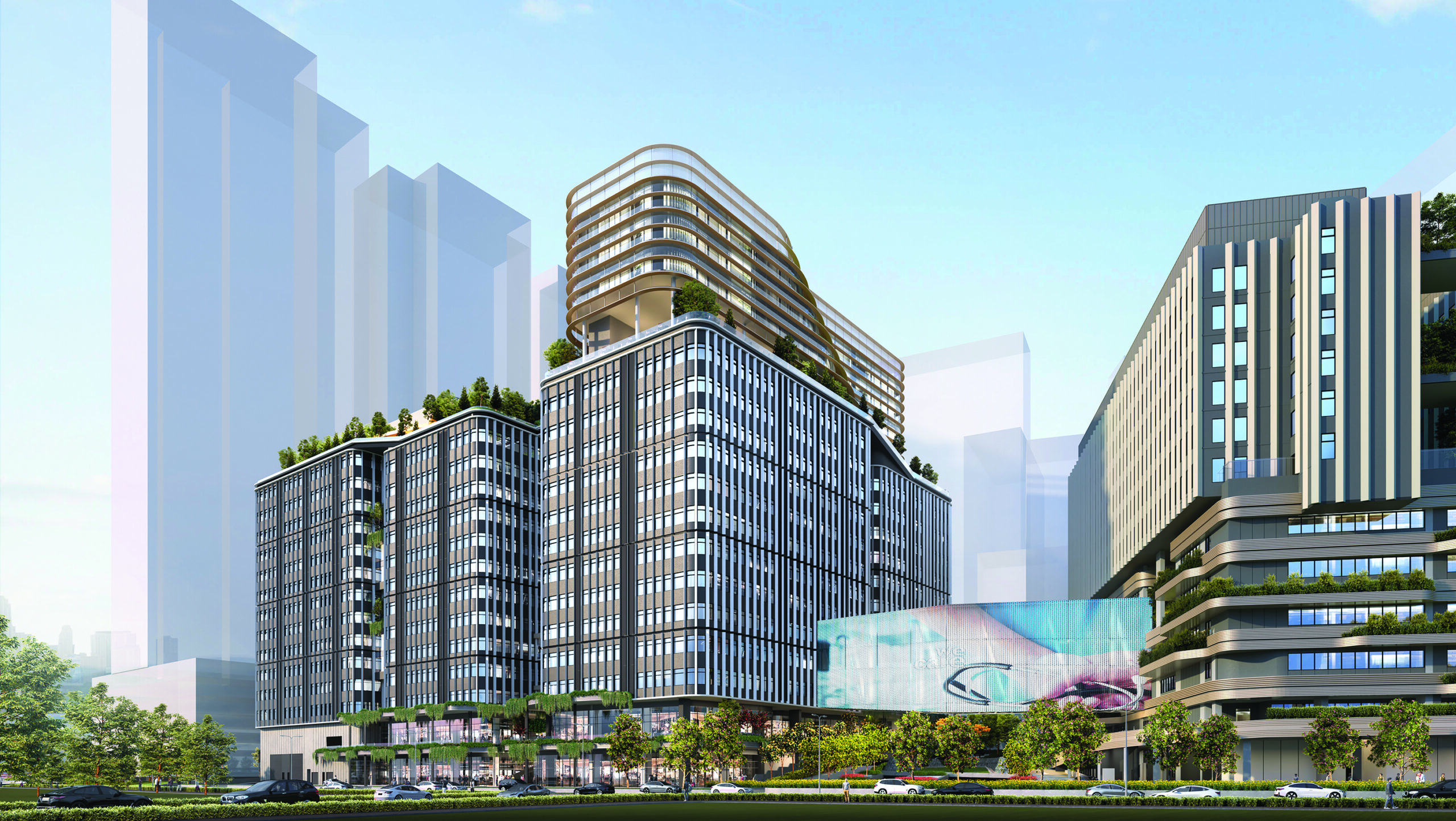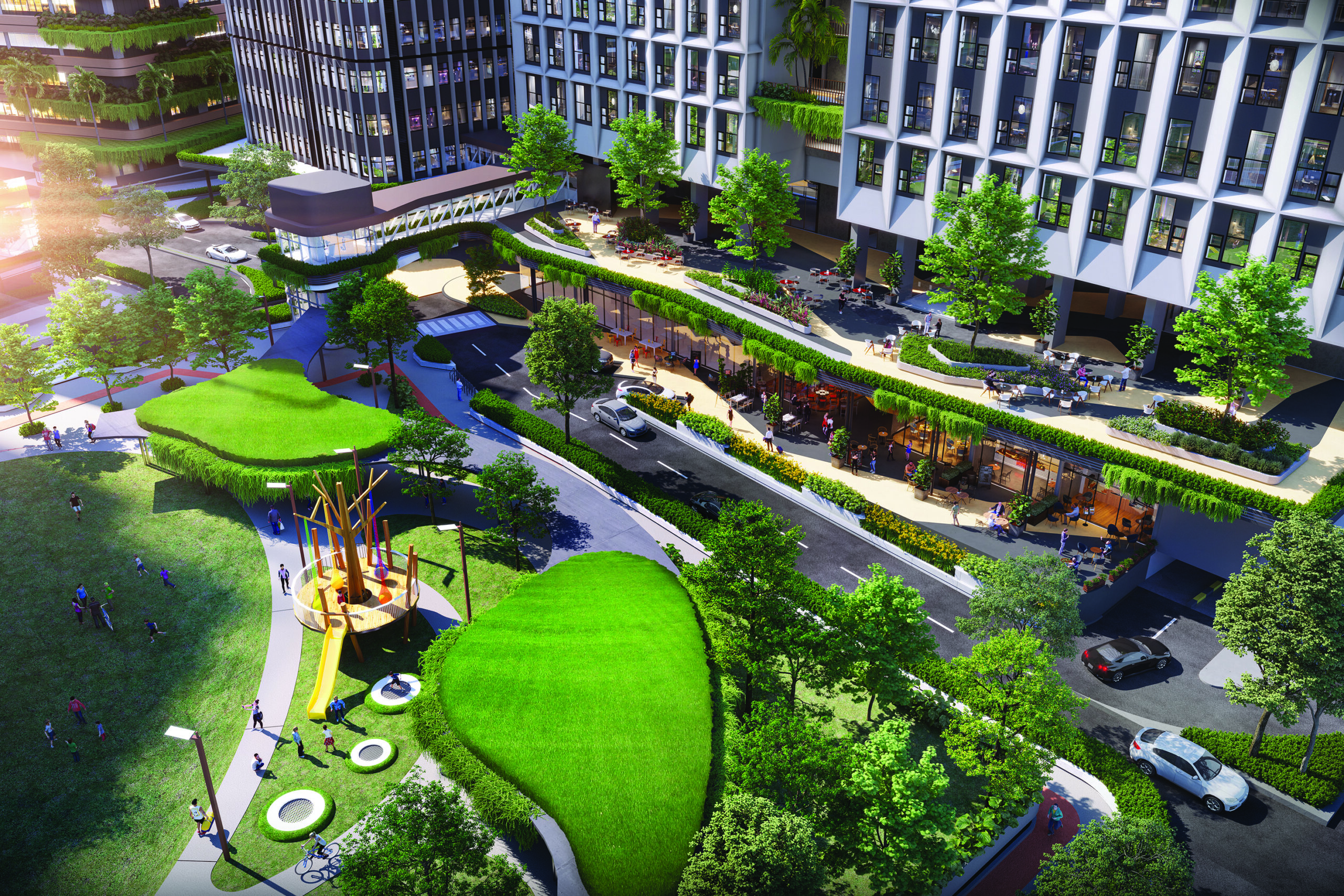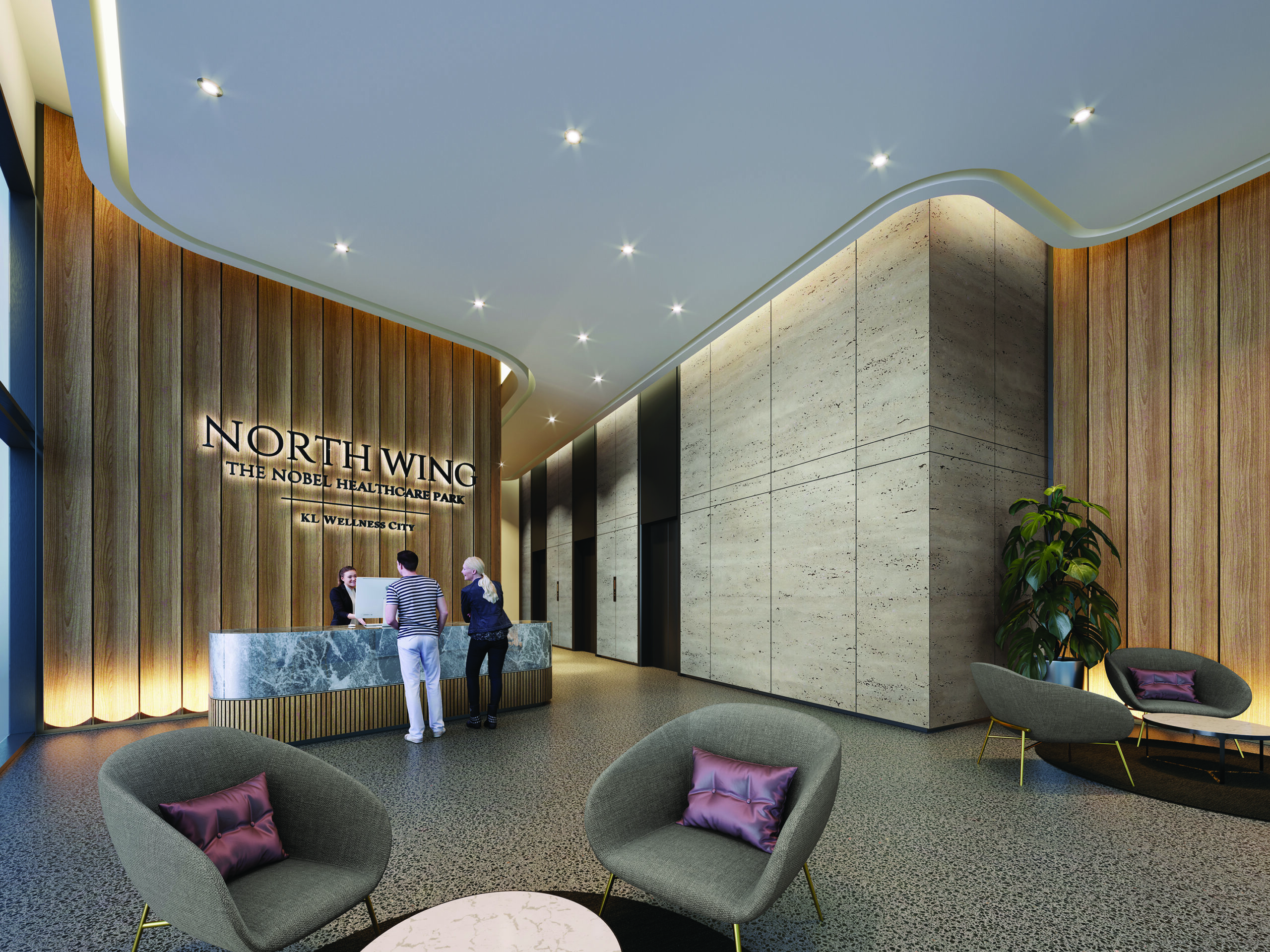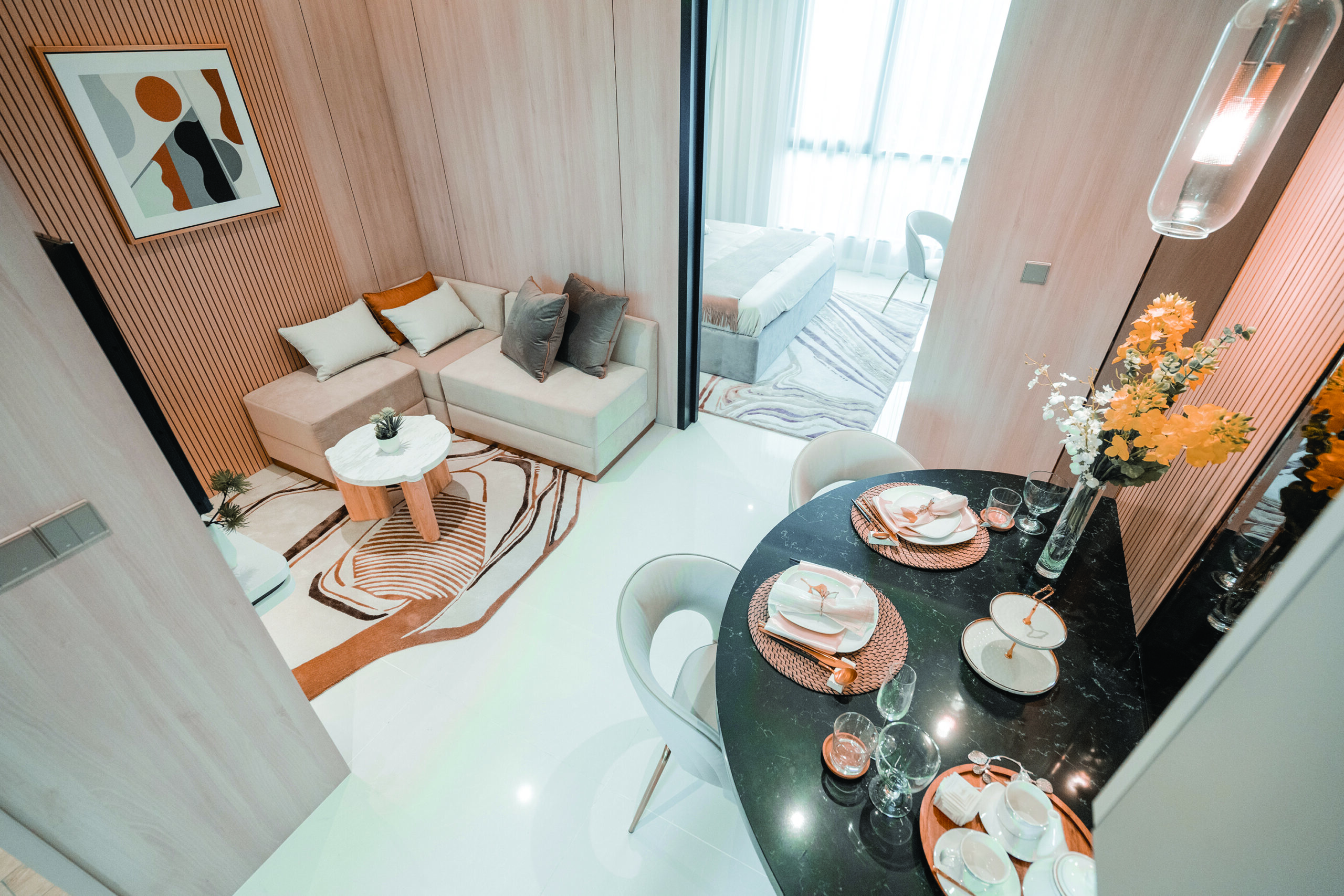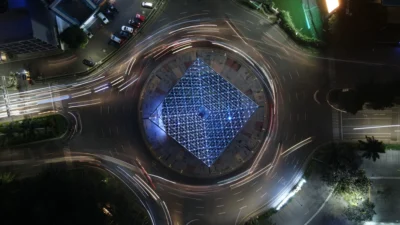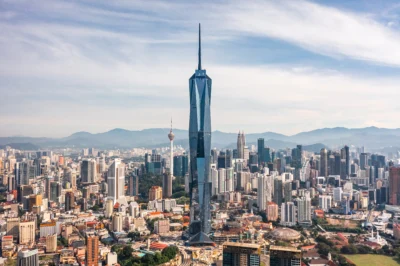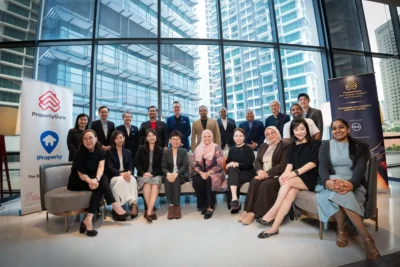There’s a township dedicated to health and wellness in Malaysia
As new fitness ideals grip Malaysia, property seekers are catered for at KL Wellness City: Southeast Asia’s first township dedicated to wellness
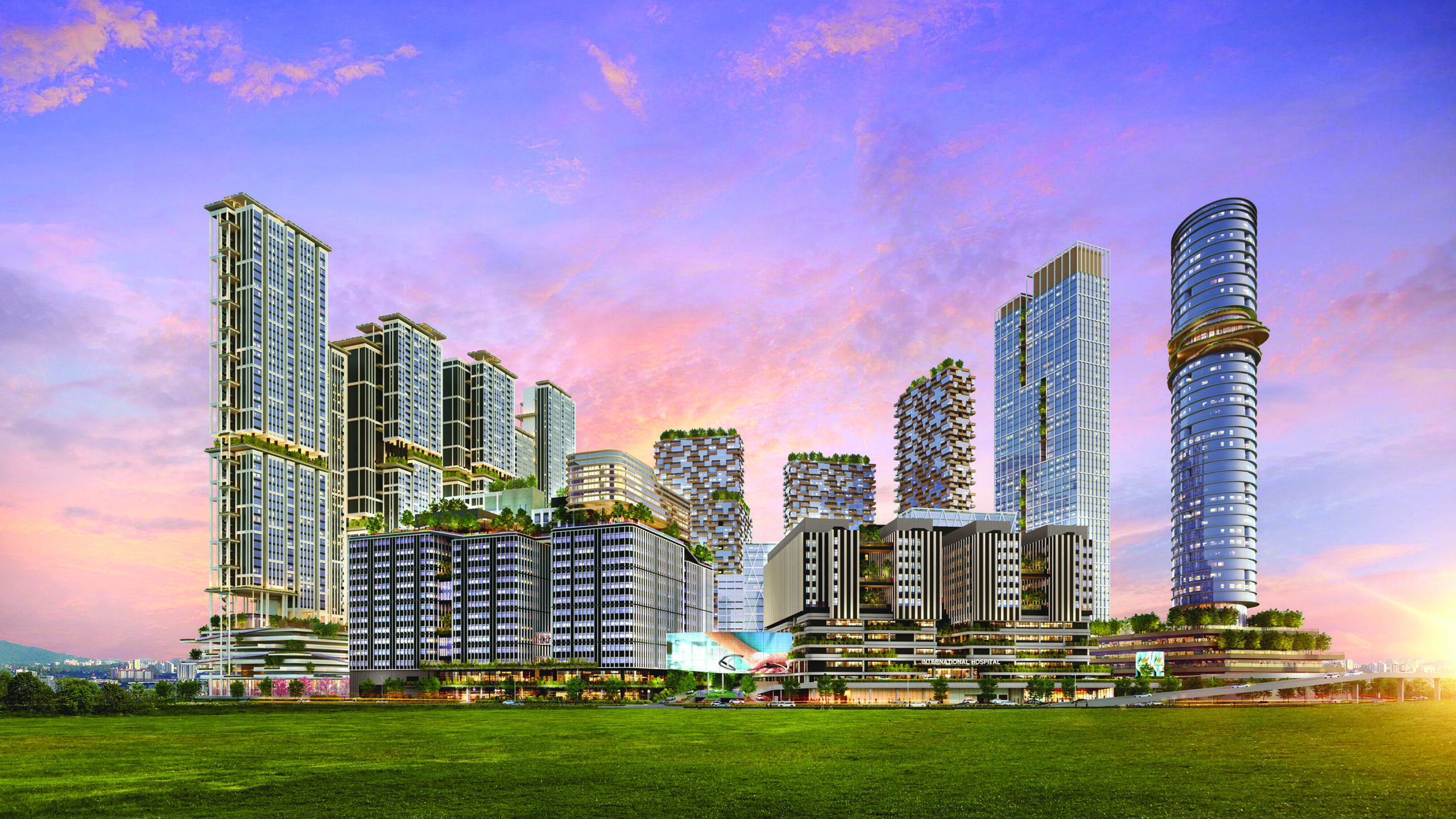
How would doctors envision a city?
Obstetrician and gynaecologist Dato’ Dr. Colin Lee fielded that question quite well with KL Wellness City (KLWC) in Malaysia.
The renowned fertility specialist banded with fellow medical professionals to develop the township, the first dedicated to healthcare and wellness in Southeast Asia. The “360-degree wellness hub,” in Lee’s words, is masterplanned to “embrace the ageing nation,” referencing Malaysia’s rapidly greying populace.
Now under construction, the first phase of KLWC is anchored on The Nobel Healthcare Park, three towers of medical, wellness, business, and retail suites connected by link bridges to the 12-storey-high International Hospital @ KL Wellness City.
The thought of integrating an entire ecosystem of healthcare services came to Lee after developing another hospital, Tropicana Medical Centre (now Thomson Hospital Kota Damansara), in 2008.
“There is a point of difference here because the people who build will be the people running the hospital and the city,” says Dato’ Sri Dr Vincent Tiew, executive director of branding, sales and marketing at the development company KL Wellness City Sdn Bhd. “We know exactly what are the weaknesses or areas that we should pay attention to in order to ensure we are operationally efficient and cost-effective.”
The dream from the get-go was to find land huge enough to fit the bill of “wellness real estate,” as defined by the Global Wellness Institute (GWI). By 2016, after years of negotiation with landowners, the developer had acquired seven individually titled parcels in Bukit Julil, an affluent suburb of Kuala Lumpur, to form the current site—a massive affair at 26.49 acres.
The developer approached architects experienced in medical and hospitality developments. As lead architect, Konzepte Asia Sdn Bhd ticked many of the developer’s boxes, and the admiration was mutual.
“When we first spoke to Colin, we got really excited because there was a sort of genuine sense and a very honest approach that he wanted to take,” says Konzepte partner Nicholas Ling, recalling his first discussions with the company in 2015. “That means it’s not just what we call ‘wellness-washing’ a project. A lot of developers do that. They put a swimming pool in their project, and they call it a ‘wellness project.’”
Ling, known for delivering projects like the Lady Cilento Children’s Hospital in Brisbane, dialogued with the city council, Dewan Bandaraya Kuala Lumpur (DBKL), during the master-planning process. The unprecedented nature of the project confounded the city hall at first, but its wellness framework spoke for itself. “Because of that, they gave us the density that we wanted,” says Ling, noting that the township’s central park will ultimately be handed over to the city government.
The pandemic eventuated in nine months of intense design processes done virtually. Around this time, age-old ideas of natural cross-ventilation and longstanding building wellness standards reignited public interest.
The zeitgeist suited the conceptualisation of KLWC just fine. Ling made it clear that the built structures of KLWC should not be “air-con boxes.” The artifice of indoor climate control was traded, where possible, for passive cooling ways, shading techniques, and other practices of Malaysian tropical vernacular design.
People are generally made to encounter a garden or outdoor space before entering air-conditioned clinical spaces. “You could be, say, in the ICU, and there’ll be a pocket garden just outside of you,” says Ling.
Such manoeuvres are necessary as the project guns for Green Building Index (GBI) certification, a balancing act between the developer’s eco-aspirations and patients’ need for a controlled, comfortable environment.
“In Malaysia particularly, a hospital that is GBI-certified is quite rare,” says Tiew. “It’s quite a big thumbs up for ourselves, a feather in our cap.
The manoeuvres are also congruent with the scientific thinking at home with the project’s medically trained leaders. Access to natural environments, let alone views to them, are linked to good recovery outcomes, research says. Windows at the township possess a greater vertical tilt than usual, inspired by studies on the benefits of being able to see the ground from certain heights. The developer also eschewed enclosed corridors and winding spaces for navigable layouts that allow people to orientate themselves in the building.
“Hospitals are typically designed almost like rabbit warrens,” says Ling. “You come into the front door, and then you feel you’re going to get lost. The further you go in, the more stress you get because you worry you can’t get back to where you need to go. So, we’ve designed it from day one with the patient, the visitor at the centre.”
We started with this idea of adaptability and flexibility, and that’s hand in hand with sustainability as well. You don’t want to have to knock things down. Healthcare changes over time
To the developer, it was imperative for architects to use building information modelling (BIM), preventing massive substantial variations and unnecessary wastage. The models keep the healthcare park and hospital on track for a 2025 completion.
“Right from the early stage, before the first pile cap was done, we were able to clearly see the whole design of each room and each floor itself,” says Tiew. “That’s seeing it like a doctor trying to do surgery.”
By early 2022, KLWC initiated piling and earthworks. The topography of the site gently inclines from one end to the other across approximately 15 metres. Its width covers several hundred metres, enabling the architects to place parking amenities either beneath ground level or a simulated ground floor.
The team strategically maximised the unique slope configuration according to height restrictions set by the Ministry of Health. The tallest of the healthcare park buildings rises only to 17 storeys, housing 512 wellness suites ideal for short-term stays by medical tourists and hospital inpatients who need monitoring after discharging.
In addition to 55 retail suites and 50,000 sq ft of business suites, the healthcare park houses 379 medical suites that doctors can privately own as clinics. Konzepte gave the suites, averaging around 650 sq ft in size, a modular design that expands to combine with adjoining units. Along with the hospital, the medical suites follow an open-plan layout, featuring columns at consistent, modular grids.
“We started with this idea of adaptability and flexibility, and that’s hand in hand with sustainability as well,” says Ling. “You don’t want to have to knock things down. Healthcare changes over time. The needs and requirements change.”
Several more healthcare centres and hospitals are expected to rise across the five as-yet-undeveloped parcels of the site. The future projects for seniors are particularly resonant since people aged 65 years and above now account for over 7% of the Malaysian populace.
But the needs of ageing people in Malaysia are not a monolith. In that light, the township has residential spaces tracking the full spectrum of retirement, old age, and decrepitude. These vary from senior living blocks for active agers to multi-generational condominiums for ageing-inplace households to an assisted living tower for those that require 24-hour care.
“You will no longer see an old folks’ home that combines people who are old and frail with people who are healthy,” says Tiew. “We are going way beyond, 10 steps ahead of that in Malaysia. We are moving forward.”
With a projected development value of MYR11 billion, the city is expected to evolve with the needs of its inhabitants over time. Health may be wealth, but the math also makes sense.
“Everything here is so scientifically designed,” says Ling. “It’s not my opinion. It’s all based on empirical data and research down to the position of the windows. We wanted sustainability to be real, to be felt, to be seen, and to have actual outcomes. We wanted people to continue to thrive within the city, within our buildings, as long as they’re there.”
This article was originally published on asiarealestatesummit.com. Write to our editors at [email protected].
Recommended
6 spots Bekasi
One of Greater Jakarta’s rising stars is prospering, thanks to ample recreation and a contingent of desirable housing projects
6 developments driving Asia’s green real estate shift
Developers are being incentivised to push a green agenda into daring new realms
The Philippines’ LIMA Estate drives sustainable industrial growth
LIMA Estate models a citywide vision that uplifts workers while appealing to climate-conscious employers
Malaysia property market rebounds with foreign interest and growth
The nation’s property market is stirring to life, fuelled by foreign buyers and major infrastructure drives

